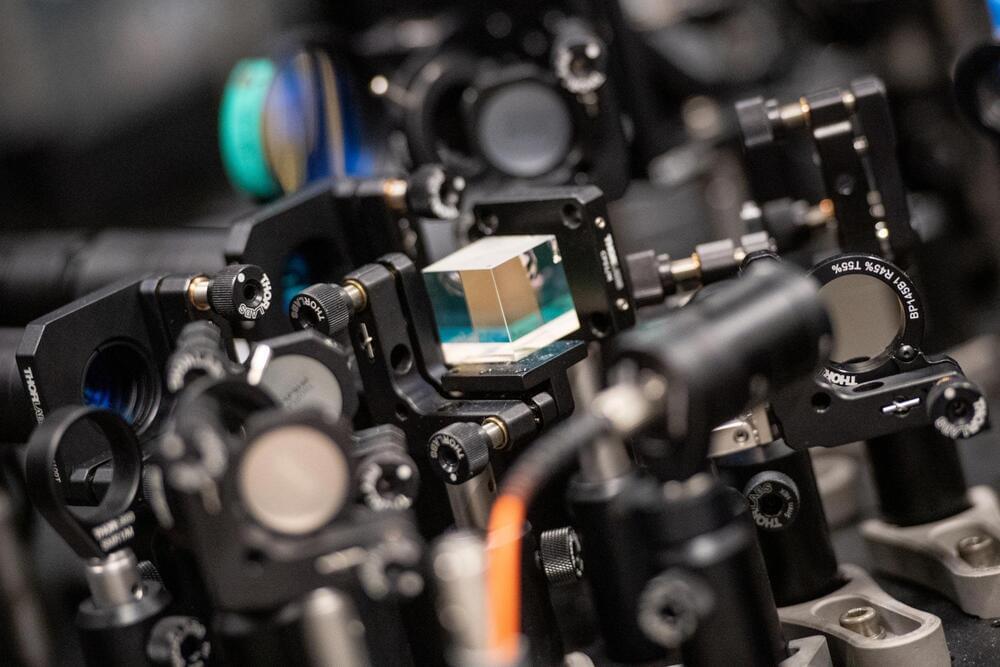Germany’s BSI disrupts BADBOX malware targeting 30,000 devices, halting ad fraud, data theft, and proxy misuse.
Researchers have doubled the number of known dark comets, identifying two distinct types: larger ones in the outer solar system and smaller ones in the inner solar system.
This discovery raises new questions about their origins and their role in delivering life-sustaining materials to Earth.
Dark Comet Discoveries
Recent scientific efforts have advanced the development of a comprehensive primate evolutionary timetree, filling significant gaps in our understanding of primate biodiversity and evolutionary history.
The primate order includes not only humanity’s closest relatives—the seven great apes—but also more than 450 species of monkeys, lemurs, lorises, and galagos. This group is remarkably diverse, ranging from 400-pound gorillas to tiny mouse lemurs (Microcebus) that weigh just one ounce. Primates display some of the most fascinating behaviors in the animal kingdom: chimpanzees use sticks to ‘fish’ for termites in hollow logs, while orangutans fashion leaf gloves to handle prickly durian fruit.
Despite being among the most thoroughly studied animals on Earth, primates still lack a complete molecular phylogenetic tree—a comprehensive evolutionary map detailing when different species emerged and how they are related. A robust phylogenetic tree would use genetic data to trace the timing of species’ appearances and identify their closest evolutionary relatives. Currently, the largest molecular timetree for primates includes just over 200 species. Even the most extensive synthetic timetree, based on more than 4,000 published studies, covers only about 400 species, leaving roughly one-fifth of the primate evolutionary tree unresolved.
Physicist Christian Schneider has been awarded a prestigious Consolidator Grant from the European Research Council (ERC) for his groundbreaking research into two-dimensional materials and their optical properties. Schneider, a professor at the University of Oldenburg in Germany, will receive approximately two million euros in funding over the next five years to support his “Dual Twist” project.
This research focuses on a novel class of atomically thin materials and their remarkable properties, which hold significant promise for advancing optical technologies.
Together with his team, Schneider will develop experimental set-ups specially designed to study the unique properties of the materials under investigation using light, and pave the way for their application in novel quantum technologies. ERC Consolidator Grants aim to support excellent scientists conducting innovative research in Europe and help them to consolidate their scientific independence. Out of a total of 2,313 applications, the ERC has now selected 328 projects for funding, 67 of which are based in Germany.
Researchers at MIT have developed a design framework for controlling ultrasound wave propagation in microscale acoustic metamaterials, focusing on the precise positioning of microscale spheres within a lattice.
This approach enables tunable wave velocities and responses, and is applicable in fields like ultrasound imaging and mechanical computing.
Acoustic Metamaterials
22q11.2 deletion syndrome (22q) raises schizophrenia risk through skull malformations linked to the Tbx1 gene, affecting cerebellar development. This highlights how non-brain factors like bone defects can influence neurological disorders.
The chromosomal disorder 22q11.2 deletion syndrome (22q) has emerged as one of the strongest risk factors for schizophrenia. Scientists at St. Jude Children’s Research Hospital identified malformed regions of the cerebellum in both laboratory models and patients with 22q, attributing these malformations to improper skull formation.
Additionally, the researchers linked the skull malformation to the loss of a single gene: Tbx1. This research highlights that neurological disorders can arise from sources outside the nervous system, such as defects in skull development. The findings were published in Nature Communications.
Can organisms generate their own self-sustaining ecosystems in space without a planet. Researchers say it’s at least plausible.
A threat actor tracked as MUT-1244 has stolen over 390,000 WordPress credentials in a large-scale, year-long campaign targeting other threat actors using a trojanized WordPress credentials checker.
Researchers at Datadog Security Labs, who spotted the attacks, say that SSH private keys and AWS access keys were also stolen from the compromised systems of hundreds of other victims, believed to include red teamers, penetration testers, security researchers, as well as malicious actors.
The victims were infected using the same second-stage payload pushed via dozens of trojanized GitHub repositories delivering malicious proof-of-concept (PoC) exploits that targeted known security flaws, along with a phishing campaign prompting targets to install a fake kernel upgrade camouflaged as a CPU microcode update.
Because glucose metabolism is disrupted in several different neurodegenerative disorders, this treatment strategy also shows promise for other brain conditions.
“The beneficial effect on brain metabolism by IDO1 inhibition cuts across different types of pathology,” Andreasson said.
“It is exciting to think that this may be a more general mechanism that could be targeted in other neurodegenerative disorders, like Parkinson’s disease, where you have accumulation of a-synuclein, or ALS, where there is accumulation of tdp-43.”









